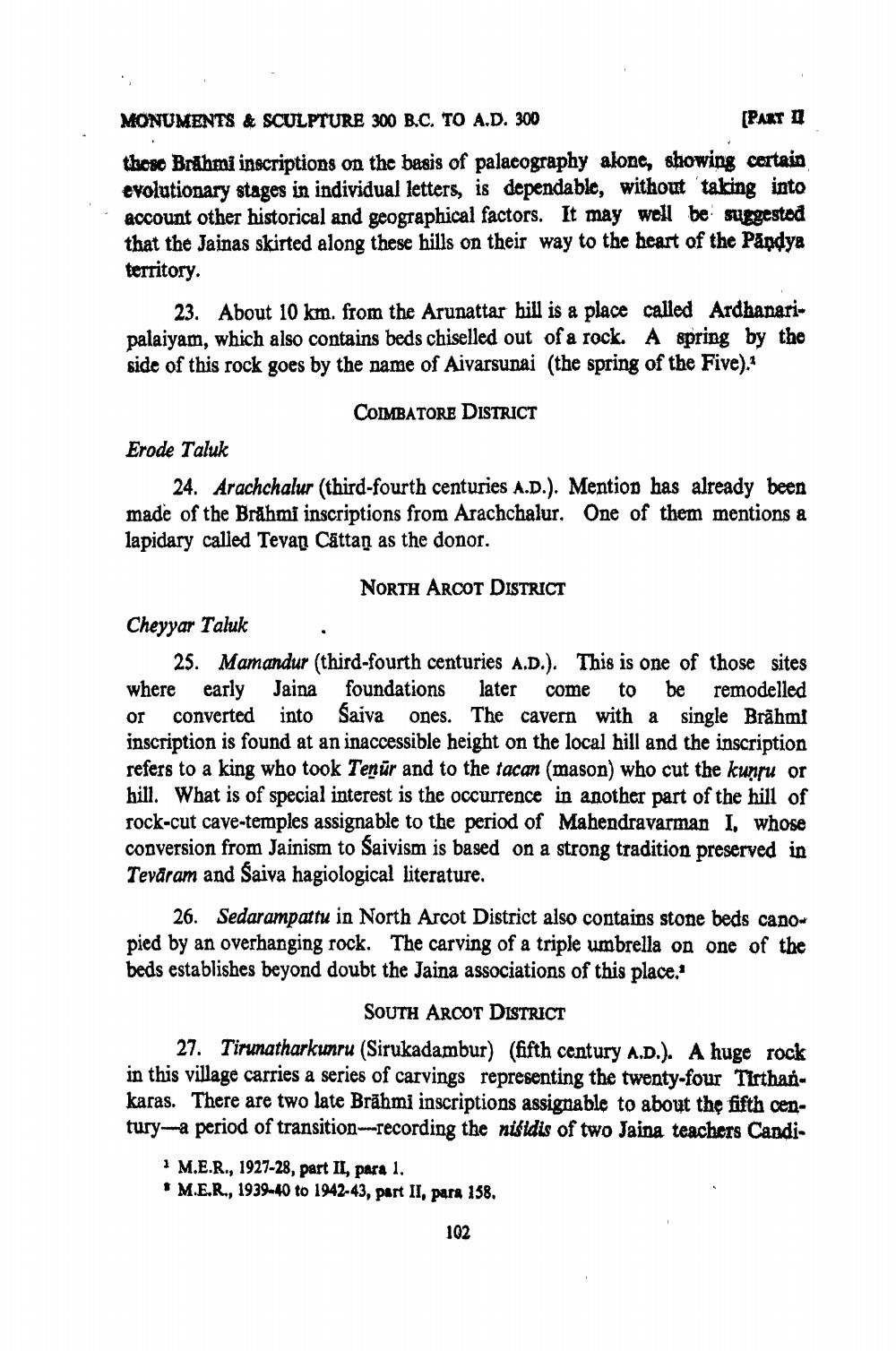________________
MONUMENTS & SCULPTURE 300 B.C. TO A.D. 300
(PART 0
those Brahmi inscriptions on the basis of palacography alone, showing certain evolutionary stages in individual letters, is dependable, without taking into account other historical and geographical factors. It may well be suggested that the Jainas skirted along these hills on their way to the heart of the Pandya territory.
23. About 10 km. from the Arunattar hill is a place called Ardhanaripalaiyam, which also contains beds chiselled out of a rock. A spring by the side of this rock goes by the name of Aivarsunai (the spring of the Five).*
COIMBATORE DISTRICT
Erode Taluk
24. Arachchalur (third-fourth centuries A.D.). Mention has already been made of the Brahmi inscriptions from Arachchalur. One of them mentions a lapidary called Tevap Cáttan as the donor.
NORTH ARCOT DISTRICT Cheyyar Taluk
25. Mamandur (third-fourth centuries A.D.). This is one of those sites where early Jaina foundations later come to be remodelled or converted into Saiva ones. The cavern with a single Brāhmi inscription is found at an inaccessible height on the local hill and the inscription refers to a king who took Tenür and to the tacan (mason) who cut the kunru or hill. What is of special interest is the occurrence in another part of the hill of rock-cut cave-temples assignable to the period of Mahendravarman I. whose conversion from Jainism to Saivism is based on a strong tradition preserved in Tevaram and Saiva hagiological literature,
26. Sedarampattu in North Arcot District also contains stone beds canopied by an overhanging rock. The carving of a triple umbrella on one of the beds establishes beyond doubt the Jaina associations of this place."
SOUTH ARCOT DISTRICT 27. Tirumatharkunru (Sirukadambur) (fifth century A.D.). A huge rock in this village carries a series of carvings representing the twenty-four Tirthankaras. There are two late Brāhmi inscriptions assignable to about the fifth centurya period of transition--recording the nisidis of two Jaina teachers Candi
* M.E.R., 1927-28, part II, para 1. * M.E.R., 1939-40 to 1942-43, part II, para 158.
102




